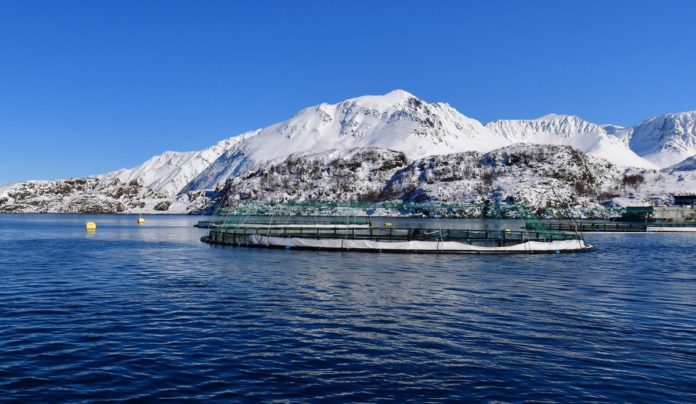Researchers at Norway’s Institute of Marine Research have conducted a study examining the impact of salmon farming on wild cod in northern Norway.
Large amounts of waste feed from salmon farms is affecting the behaviour of wild cod, a study had found.
The findings of the study from The Institute of Marine Research, published in the journal Reviews in Aquaculture, highlight seven major potential risks that salmon farming may pose to these cod species.
The identified risks include:
- Cod are attracted to farms because the feed used, scarcity of other prey, and bright lights draw them in.
- Cod are driven away from farms by the noise, operations, and chemicals released into the water.
- The waste feed eaten by cod has different fatty acids because it’s made mostly from plants, not their usual diet.
- Cod near farms might grow faster because they have more access to this waste feed.
- Cod could be exposed to harmful chemicals used in treatments for sea lice and materials to protect the farms.
- The type and amount of prey available to cod might change due to how the farms affect the surrounding ecosystem.
- There’s a higher chance of diseases spreading among fish, including viruses, bacteria, and parasites, especially because wild fish tend to gather around the farms.
Thomas Bøhn, a marine researcher involved in the study, emphasized the significant risk posed by feed from salmon farms, which could alter cod behavior related to grazing, spawning, and migration, and potentially affect their survival. He also highlighted the concern of disease transmission due to the congregation of fish around these farms.
“Large amounts of waste feed, probably 60,000 – 100,000 tonnes per year, can cause wild fish to congregate around the farm, something that can change the interactions and health of the ecosystem, said Bøhn.
“To ensure sustainability along the coast, the environmental impact from farming must be minimized, and we need solid knowledge about how aquaculture can affect the wild fish stocks along the coast.”
Furthermore, the researchers note that the effects of climate change, particularly in northern waters, could exacerbate these risks, increasing the overall burden on cod populations.
The study, part of the SalCod project funded by the Norwegian Research Council, aims to provide a comprehensive assessment of how salmon farming impacts wild cod stocks in northern coastal areas.
Key areas of focus include the influence of salmon farming on cod behavior, physiology, growth, sexual maturation, recruitment, and survival across various life stages.

